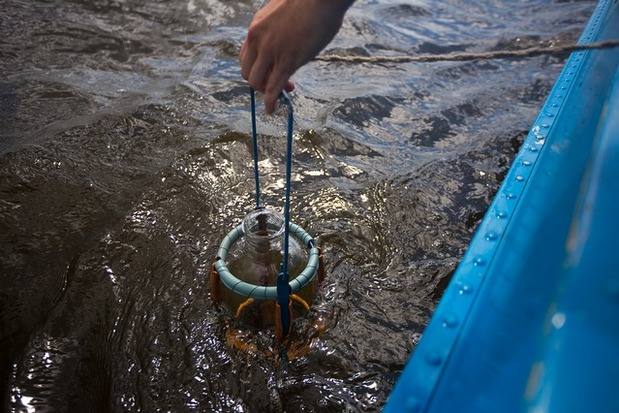Determination of fluoride in water by ion selective electrode method, the lowest detection limit is 0.05mg/L (in F), the principle is that the lanthanum fluoride electrode is used as the indicator electrode, and the saturated calomel electrode (or silver chloride electrode) is used as the reference. When the total ionic strength in the sample is constant and sufficient, the electromotive force of the battery changes with the change of the fluoride ion activity in the tested sample. The fluoride ion concentration in the sample was calculated using the linear relationship between the electromotive force and the negative logarithm of the ionic activity.

1. Hydrochloric acid = 1%
Take 15mL of concentrated hydrochloric acid p(HCl)=1.19g/mL, and dilute it to 100mL with laboratory first-grade pure water.
2. Total ionic strength adjustment buffer solution 0.2mol/L sodium citrate+1.0mo/L sodium nitrate
Weigh 58.8g of secondary laboratory first-grade pure water sodium citrate and 85.0g of sodium nitrate, dissolve in laboratory first-grade pure water, dilute to 100mL, and adjust the pH to 5-6 with hydrochloric acid.
3. Fluoride standard solution 100mg/L
Weigh sodium fluoride (0.2210±0.0002) g dried at 105℃-110℃ for 2h, dissolve it in laboratory first-grade pure water, dilute to 1000mL, shake well, and store in a polyethylene bottle.
4. Fluoride standard solution 10mg/L
Draw 10mL of fluoride standard solution, dilute to 100mL with laboratory first-grade pure water, shake well, and store in a polyethylene bottle.
5. Sodium acetate solution 150g/L.
Weigh 15g of sodium acetate, dissolve it in laboratory first-grade pure water, and dilute to 100mL. 6. Fluoride ion selective electrode, saturated calomel electrode or silver chloride electrode.
7. Ion activity meter or voltmeter (accurate to 0.1mV).
8. Polyethylene Cup
(100 mL, 150 mL).
9. Magnetic stirrer.

Samples should be collected and stored in polyethylene bottles. If the fluoride content is not high and the PH value is above 7, it can also be stored in a hard glass bottle.
Before testing, both the water sample and the standard solution should reach room temperature (the temperature difference should not exceed ±1°C). The measurement steps are as follows:
1. Take an appropriate amount of experimental water sample and transfer it into a 50mL volumetric flask, adjust it to near neutrality with hydrochloric acid or sodium acetate (with pH test paper), add 10mL total ionic strength adjustment buffer solution, dilute with water to the mark, shake well and pour into polyethylene Put the stirring rod into the cup, insert the electrode, and read the potential value after the potential is stable while stirring.
2. Add a certain amount of fluoride standard solution to the solution whose potential value E1 has been measured, and read the equilibrium potential value E2 under constant stirring. The difference between E2 and E1 should be 30mV-40mV.
It should be noted that before each measurement, the electrode should be thoroughly rinsed with water and blotted dry with filter paper.
Finally, the concentration of fluoride in the water sample was calculated according to the corresponding formula.
最新动态
相关推荐